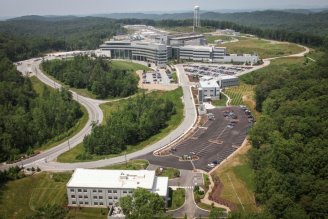Copyright 2012 neutronsources.org | All rights reserved. | Powered by FRM II | Imprint / Privacy Policy
ORNL 2016: A neutron scattering proposal call
ORNL is calling for proposals with deadline October 14. There is updated information for the Quantum Condensed Matter instruments at the HFIR.
Date: 05/10/2015
Source: http://www.ornl.gov/

As the deadline approaches for the next neutron scattering proposal call at ORNL, here are some quick updates about the Quantum Condensed Matter instrument suite at the High Flux Isotope Reactor (HFIR):
1. IPTS is now open to accept proposals for cycle 2016-A, with an October 14th deadline at noon: http://www.ornl.gov/sci/iums/ipts/
2. The Quantum Condensed Matter HFIR instrument suite includes:
(i) HB-1A: fixed incident energy thermal triple axis spectrometer. Excellent signal-to-noise ratio and large Q-coverage makes this instrument ideal for magnetic diffraction studies of small single crystals (mass > 5 mg) and thin films at a variety of different temperatures (0.03 K – 1800 K), magnetic fields (0 – 8 T), and applied pressures. For more information, please contact Wei Tian or Adam Aczel.
(ii) HB-1: polarized thermal triple axis spectrometer. This instrument is specifically designed for polarized beam measurements, but also highly efficient for general purpose unpolarized neutron scattering experiments. These measurements can be done at a variety of different temperatures (0.03 K – 1800 K) and magnetic fields (0 – 8 T). For more information, please contact Masaaki Matsuda or Daniel Pajerowski.
(iii) HB-2A: neutron powder diffractometer. This instrument is used for crystal and magnetic structure studies of powder and ceramic samples at a variety of different temperatures (0.03 K – 1800 K), magnetic fields (0 – 5 T), and applied pressures up to 2 GPa. For more information, please contact Clarina de la Cruz or Stuart Calder.
(iv) HB-2C: wide-angle neutron diffractometer. This instrument is used for fast measurements of medium-resolution powder diffraction patterns and measurements of diffuse scattering in single crystals using flat-cone geometry. These measurements can be done at a variety of different temperatures (0.3 K – 1800 K) and magnetic fields (0 – 5 T). For more information, please contact Jaime Fernandez-Baca or Songxue Chi.
(v) HB-3: general purpose thermal triple axis spectrometer. This instrument is our most intense triple axis spectrometer and is designed for inelastic measurements on single crystals over a wide range of energy and momentum transfers. These measurements can be done at a variety of different temperatures (0.03 K – 1800 K) and magnetic fields (0 – 8 T). For more information, please contact Songxue Chi or Daniel Pajerowski.
(vi) HB-3A: four-circle single crystal diffractometer. This instrument is equipped with a two-dimensional area detector. It is used for single crystal diffraction measurements (both structural and magnetic) over a temperature range 4 – 800 K. Additional sample environment options include high pressures up to 2 GPa, electric fields (voltages up to 1100 V), and magnetic fields up to 1 T. For more information, please contact Huibo Cao or Bryan Chakoumakos.
(vii) CG-4C: cold triple axis spectrometer. This instrument is designed for inelastic measurements on single crystals, where low energy transfers between -2 to 5 meV are necessary. These measurements can be done at a variety of different temperatures (0.03 K – 1800 K) and magnetic fields (0 – 11 T). We have successfully completed commissioning of a new analyzer with fixed vertical focusing. The geometry in the horizontal direction can be either flat or focused. This allows one to have the flexibility of sacrificing Q-resolution for additional intensity. For more information, please contact Tao Hong or Adam Aczel.
(viii) GP-SANS: general-purpose small angle neutron scattering diffractometer. This instrument is used for probing magnetic structures on the order of 0.5 nm to 200 nm length scales (q=0.0007 to ~1 Å). These measurements can be done at a variety of different temperatures (0.03 K – 1300 K) and magnetic fields (up to 4.5 horizontally and 8 T vertically). Currently the horizontal magnet is restricted to limited use but we will be commissioning a new horizontal magnet in March 2016. For more information, please contact Lisa DeBeer-Schmitt.
More details for all of these instruments can be found at the following link: